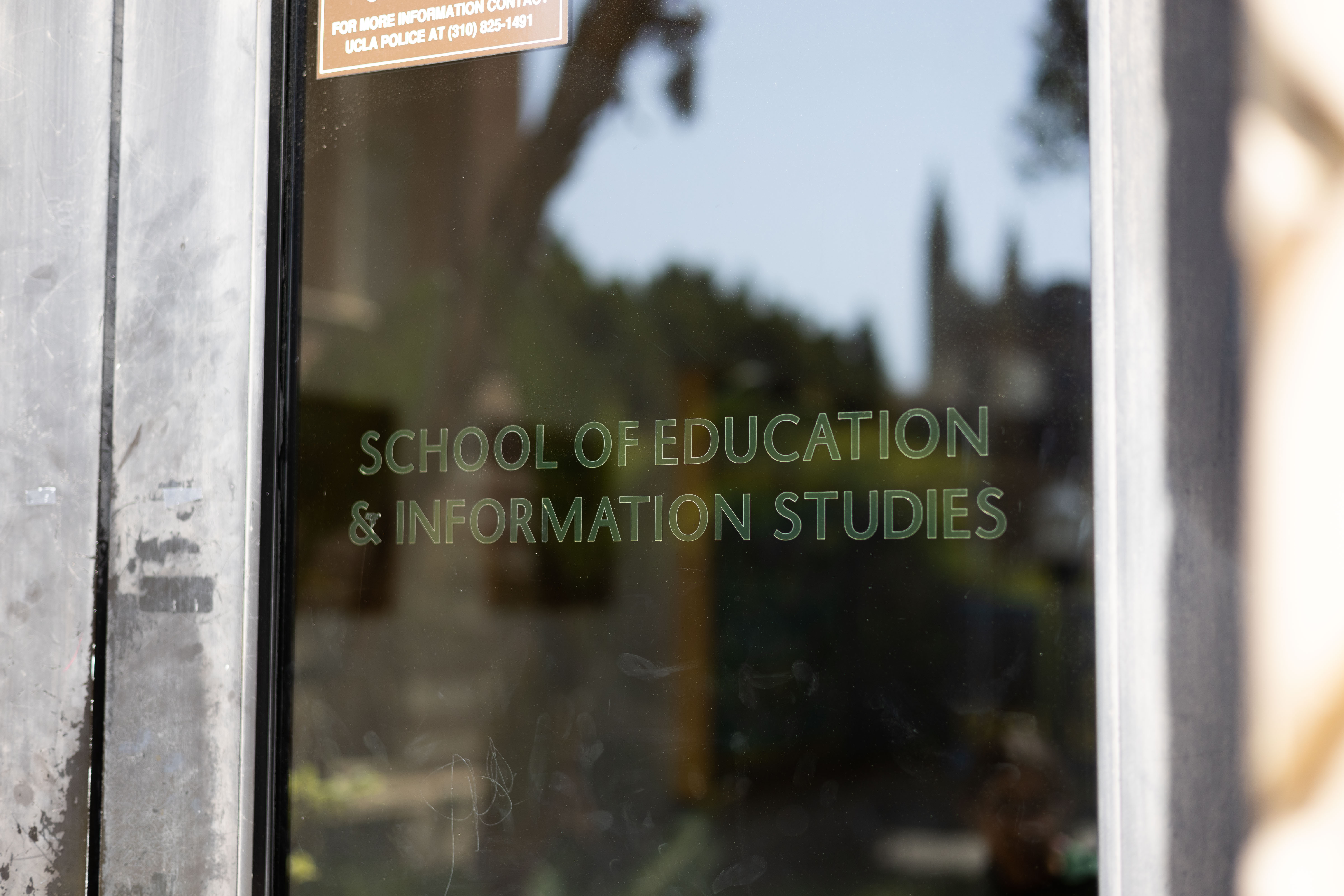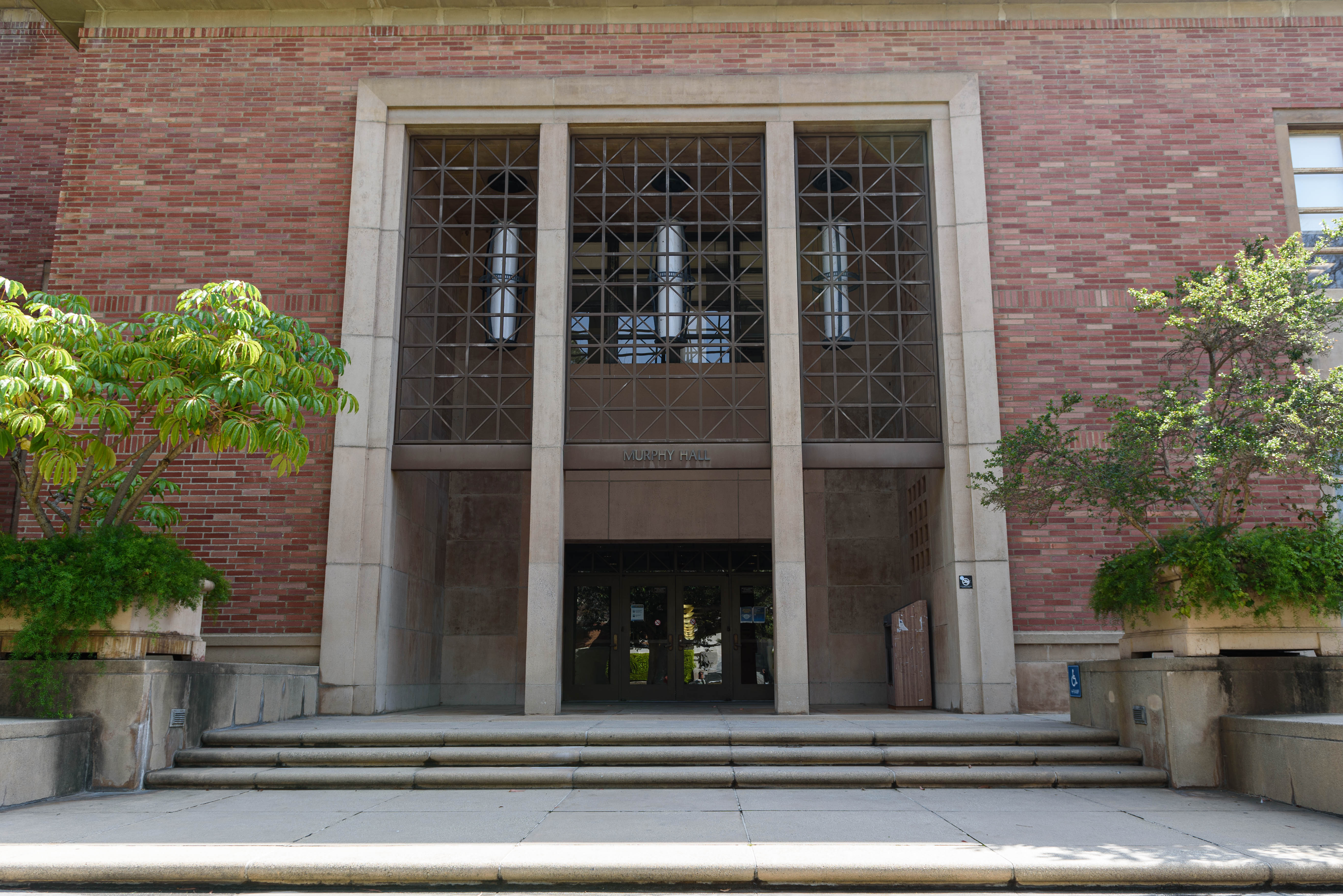Studies reveal inequalities among teachers of color in California schools

The UCLA School of Education & Information Studies is pictured. The Civil Rights Project, an institute within the school, recently published two studies regarding racial equity for teachers in California. (Shane Yu/Daily Bruin staff)

By Vivian Stein
May 26, 2024 9:57 p.m.
This post was updated May 27 at 8:57 p.m.
California is a long way from achieving racial equity for teachers, according to two recent studies conducted by the Civil Rights Project at UCLA.
Their recent press release contains two studies related to California’s lack of diversity among public school teachers. The first study, in collaboration with the UCLA Center for the Transformation of Schools, looked at barriers for Indigenous teachers and teachers of color in California, and the second discussed the unequal distribution of teachers within the state.
The research team began collecting data three years ago through interviews with students – particularly students of color – in teacher-preparation programs at four-year universities, said study co-author Kai Mathews.
Researchers found that a teacher of color is more likely to take out student loans during their education than a white teacher as a result of historical and social factors, disproportionate employment opportunities and a lack of familial financial support, she added. This monetary commitment acts as a barrier for people of color to explore the teaching profession, Mathews said.
“There were still some clear and obvious barriers for people of color to enter the profession, which allowed our numbers in the teaching population to look the way that they do, with the majority of our teachers being white teachers,” Mathews said.
Another key finding was that teachers of color are often placed in underresourced teacher training programs, Mathews said. She added that this is an example of predatory inclusion, where a marginalized group is provided access to a previously blocked resource, but the conditions and training within this program are unequal.
The second study explores inherent issues of diversity among teachers. It found that there is an unbalanced teacher distribution in schools of differing racial compositions.
In California’s districts, inexperienced teachers are placed in poverty-stricken schools, which intensifies inequality, said Gary Orfield, one of the study’s co-authors and the co-director of the Civil Rights Project at UCLA.
“Experienced teachers – we have lots of evidence to show – are more valuable to the students,” Orfield said. “The students in these isolated, doubly segregated schools need support now because they typically are from families and communities that have fewer resources.”
Teachers with less experience are often positioned in schools with high proportions of Black and Latino students, said Ryan Pfleger, another of the study’s co-authors. He added that schools with higher proportions of Black and Latino students should have teachers with more experience to equalize opportunities for student learning.
Teachers of color are helpful to students of color in terms of their learning and relationships, Orfield said. They are also valuable to white students because they offer a model of interracial collaboration, he added.
Educational resources are offered in lower quantities and qualities in schools with a higher proportion of students of color, Pfleger said. Teacher experience is one of those aspects, he added.
“Teachers are an important part of the school experience, and whether they are experienced or not influences student outcomes and the student experience itself,” Pfleger said. “Part of the inspiration of this study is to say, ‘Hey, we should look at this kind of inequality. It is one of the many inequalities that’s both produced and reproduced through schooling.’”
The first study recommends introducing a bill that provides teachers with tuition, support for future professional development and enhanced recognition to help mitigate roadblocks for teachers of color, Mathews said.
“We really have a problem with teachers in general – we really need to devote more resources to their education and funding and we need to give them a different kind of preparation,” Orfield said. “We desperately need to recruit more teachers of color who can develop these positive relationships, not just as teachers but also as counselors and people who can have shared history and experience with students of color.”





